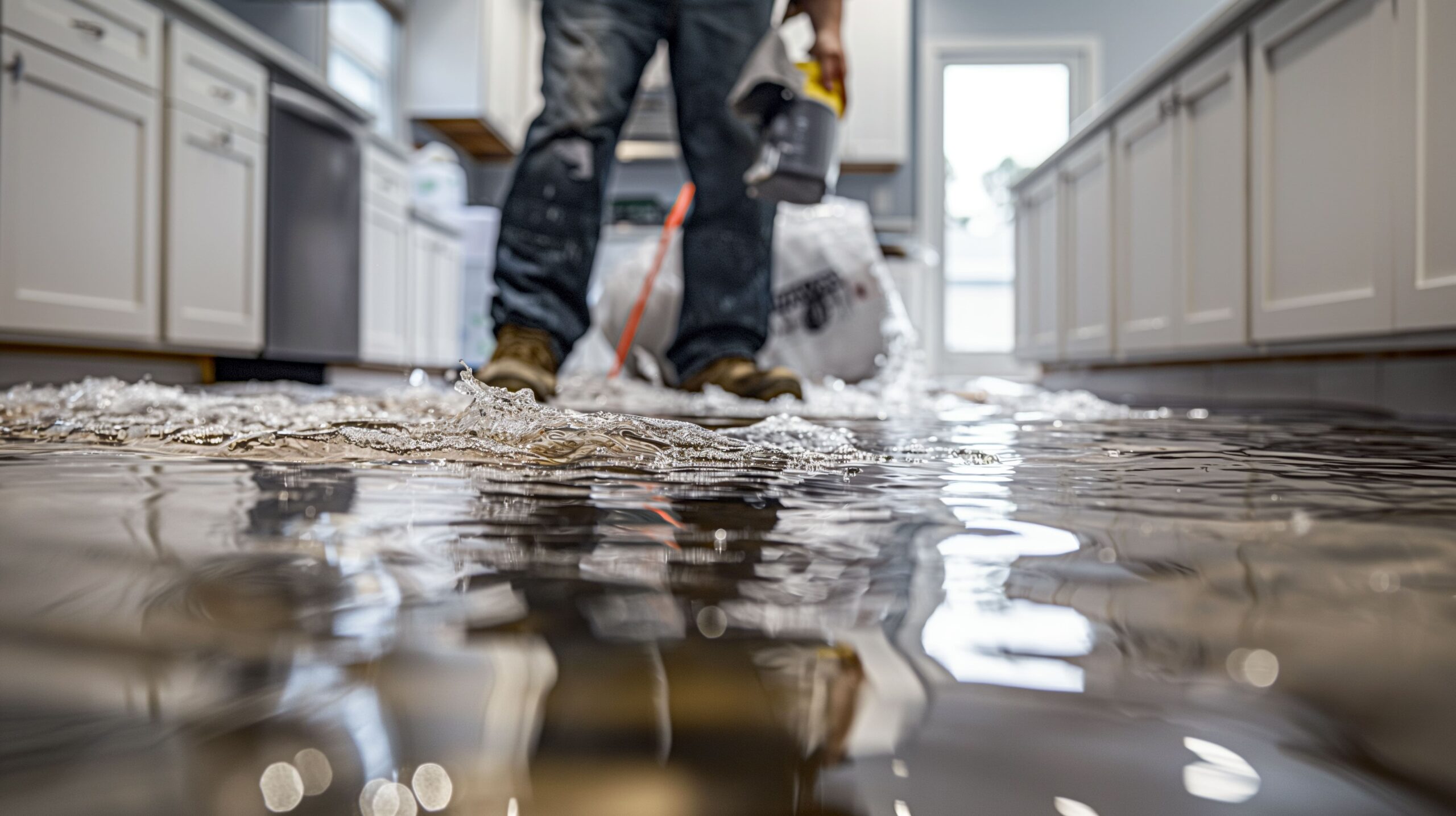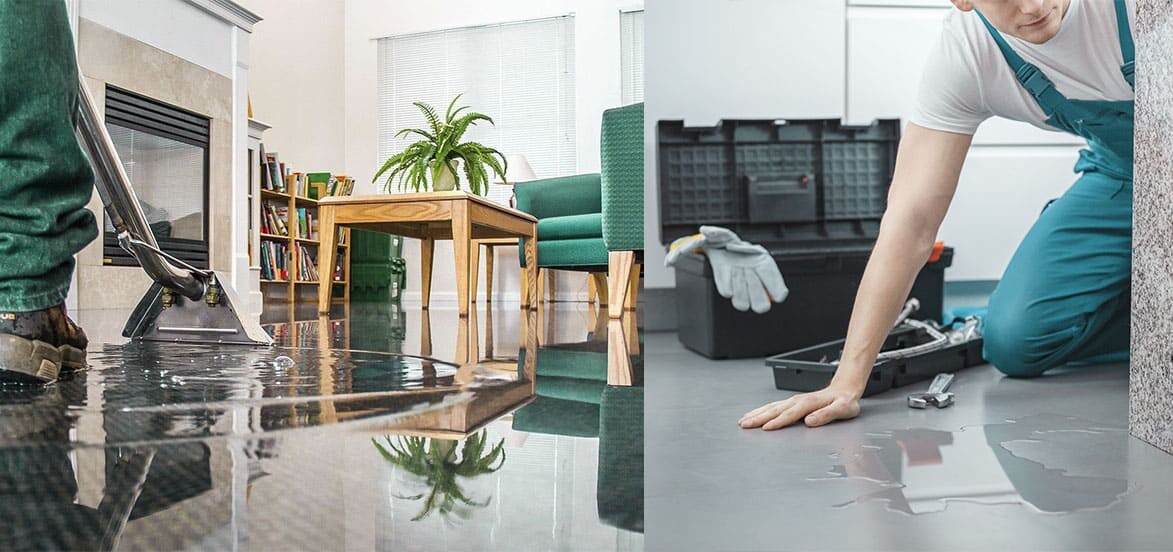Top Tips for Effective Water Damage Restoration: Protect Your Residential Or Commercial Property Today
Water damage can strike unexpectedly, causing substantial disruption and prospective hazards. Effective remediation needs a methodical approach to reduce additional injury. From evaluating the damage to applying precautionary steps, each action plays an essential role in safeguarding home. Comprehending these methods can make all the distinction in the results of a water-related crisis. What important activities should be prioritized to assure detailed security?

Assess the Damage Immediately
When a water damage occasion happens, it is vital to examine the damage immediately to minimize further problems (Water Damage Restoration). This initial analysis assists figure out the level of the damage and identifies affected areas. Water can seep right into walls, floors, and furnishings, resulting in mold and mildew development and architectural instability otherwise attended to promptly. A complete inspection needs to include checking for staining, dampness, and moldy odors, which indicate dampness existence. It is also crucial to document the damage via photos and notes for insurance functions. Engaging experts for a much more detailed assessment may be required, especially when taking care of comprehensive or surprise damage. Early recognition and precise evaluation lay the foundation for effective remediation and safeguard the residential property from added issues
Turn off the Supply Of Water
Turning off the water is a crucial action in protecting against more damage during a water-related occurrence. When a leak or flooding occurs, prompt action is crucial to reduce the degree of the damage. Situating the main water shut-off shutoff should be a top priority. This valve is typically located near the water meter or where the water line gets in the building. When located, turning the shutoff clockwise will certainly quit the flow of water. In instances where the major valve is inaccessible, private shut-off shutoffs for home appliances might also be utilized. Promptly turning off the water system not just safeguards the property from additional injury however also helps with the subsequent restoration process, guaranteeing that recovery efforts can begin immediately.
Eliminate Excess Water Quickly
Getting rid of excess water quickly is important for lessening damage and avoiding mold growth in affected areas. The longer water stays touching products such as drywall, insulation, and timber, the greater the threat of architectural damage and the advancement of mold. Home owners ought to act promptly to assess the situation and use appropriate devices, such as damp vacuums or pumps, to remove standing water efficiently. If the volume of water is significant, contacting expert repair services might be necessary, as they can give customized devices and expertise. In addition, eliminating furnishings and personal belongings from the affected area can aid to minimize damage and promote the total remediation procedure. Timely activity not just safeguards residential or commercial property however additionally help in a smoother recovery trip.

Dry Out the Affected Area
After eliminating excess water, it is necessary to dry out the affected location completely. This includes getting rid of any type of standing water and improving air flow to facilitate dissipation. Water Damage Restoration. Effective drying out will certainly aid avoid mold and mildew growth and additional damage
Eliminate Standing Water
Swiftly attending to standing water is essential for effective water damage remediation. The existence of stationary water can lead to further residential property damage and create a setting for mold and mildew growth. To reduce these dangers, it is necessary to eliminate standing water as swiftly as feasible. Water Damage Restoration. This procedure normally entails making use of completely submersible pumps, damp vacuum cleaners, or specialized extraction equipment. Professionals advise examining the deepness and level of the water before selecting the suitable approach for elimination. Safety and security safety measures must also be taken, consisting of using safety equipment and guaranteeing electrical energy is turned off in impacted locations. When the standing water is successfully eliminated, the drying process can start, further protecting the property from ongoing damage

Increase Air Blood Circulation
Improving air flow is essential for efficiently drying out locations impacted by water damage (Flood Cleanup Services). This process helps to speed up evaporation, lowering the danger of mold and mildew growth. Experts frequently advise using fans to create a consistent air movement throughout the space. Putting box fans in home windows can pull in fresh air, while high-velocity fans can guide airflow towards wet surfaces. In addition, opening windows and Water Damage Restoration doors permits for cross-ventilation, enhancing the drying out procedure. Dehumidifiers can additionally be used to get rid of excess dampness from the air, additional aiding in drying. By making sure that air flows freely, residential property proprietors can substantially reduce the lasting impacts of water damage and safeguard the integrity of their structure
Examine for Mold Growth
Mold growth is a significant problem following water damage, as it can cause health and wellness problems and structural damage. After any type of flooding or leakages, it is vital to conduct a comprehensive examination of the influenced areas. This consists of checking hidden rooms such as behind wall surfaces, under rugs, and in basements or attics where moisture may stick around. Indications of mold include a moldy odor, discoloration on surfaces, or visible development. Homeowner ought to utilize safety gear when evaluating, as mold and mildew spores can posture wellness threats. If mold is detected, it is essential to address it instantly, as delaying removal can aggravate the issue and boost the risk of major health and wellness issues for residents. Early treatment is vital to efficient mold and mildew management.
Repair and Bring Back Broken Frameworks
When resolving water damage, it is important to first assess the architectural integrity of the impacted areas. This analysis aids identify prospective threats and informs the necessary repair service approaches. Involving expert restoration services ensures that the repair procedure is performed securely and efficiently.
Examine Structural Integrity First
Before starting any kind of water damage remediation, it is important to assess the architectural honesty of the afflicted location. This examination aids identify any type of jeopardized aspects, such as walls, structures, or beams, which might present safety and security dangers. Checking for indicators of warping, fracturing, or mold and mildew growth is crucial, as these signs can expose underlying damage that calls for immediate focus. In addition, understanding the level of the damage can direct restoration initiatives and establish whether fixings are viable or if replacement is essential. It is very important to record searchings for extensively, as this information can be beneficial for insurance cases or future recommendation. Prioritizing architectural evaluation assurances that repair efforts continue securely and effectively, eventually protecting the property and its passengers.
Use Specialist Restoration Services
Utilizing professional restoration solutions is important for effectively fixing and bring back damaged frameworks after water occurrences. These experts possess the needed training, devices, and experience to assess and reduce water damage completely. They can determine surprise problems, such as mold and mildew development and structural weaknesses, that might not be promptly apparent. Professional services additionally utilize advanced drying out techniques and equipment, ensuring that all wetness is eliminated to avoid additional damage. Additionally, they follow industry criteria and policies, making sure that the repair procedure is reliable and secure. By involving remediation professionals, building owners can speed up recuperation, reduce lasting damage, and inevitably safeguard their financial investment. This proactive technique is important in maintaining the integrity and security of affected frameworks.
Protect Against Future Water Damage
To successfully protect against future water damage, house owners must adopt a positive method to repair and maintenance (Flood Cleanup Services). Routine assessment of downspouts, roofing systems, and seamless gutters is important; stopped up rain gutters can result in water overflow and roof leaks. In addition, examining for leaks in pipes fixtures and home appliances can thwart potential damage. Property owners must additionally think about setting up sump pumps in basements or low-lying areas to handle water build-up. Sealing cracks in foundations and ensuring correct water drainage around the home are vital steps in safeguarding versus water breach. Preserving humidity levels with dehumidifiers can stop mold development. By executing these precautionary actions, property owners can greatly minimize the threat of water damage and shield their residential property for the lengthy term
When a water damage occasion happens, it is essential to evaluate the damage instantly to reduce further concerns. Eliminating excess water without delay is important for reducing damage and stopping mold and mildew growth in impacted locations. Quickly addressing standing water is important for efficient water damage remediation. The visibility of stagnant water can lead to more building damage and produce an atmosphere favorable to mold and mildew growth. Before initiating any type of water damage remediation, it is crucial to examine the architectural stability of the damaged area.